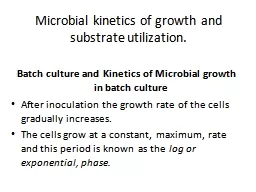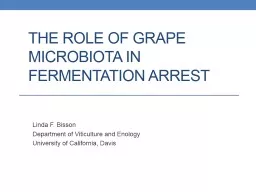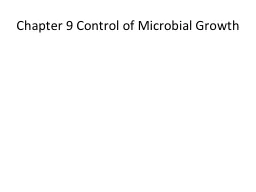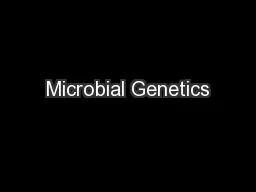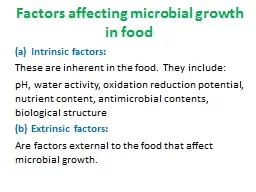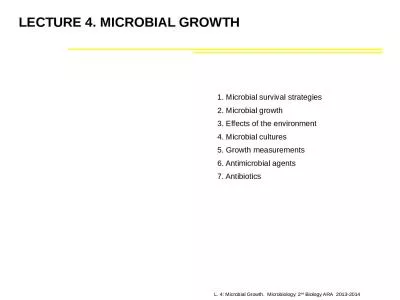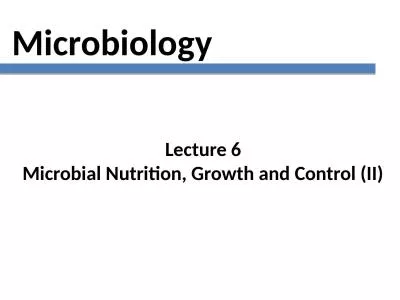PPT-LECTURE S Microbial Growth
Author : fiona | Published Date : 2024-03-13
Kinetics Growth Curve Log CFUml Optical Density Lag First Order Kinetics Food microbiology is concerned with all phases Of microbial growth laglog stationary
Presentation Embed Code
Download Presentation
Download Presentation The PPT/PDF document "LECTURE S Microbial Growth" is the property of its rightful owner. Permission is granted to download and print the materials on this website for personal, non-commercial use only, and to display it on your personal computer provided you do not modify the materials and that you retain all copyright notices contained in the materials. By downloading content from our website, you accept the terms of this agreement.
LECTURE S Microbial Growth: Transcript
Download Rules Of Document
"LECTURE S Microbial Growth"The content belongs to its owner. You may download and print it for personal use, without modification, and keep all copyright notices. By downloading, you agree to these terms.
Related Documents




